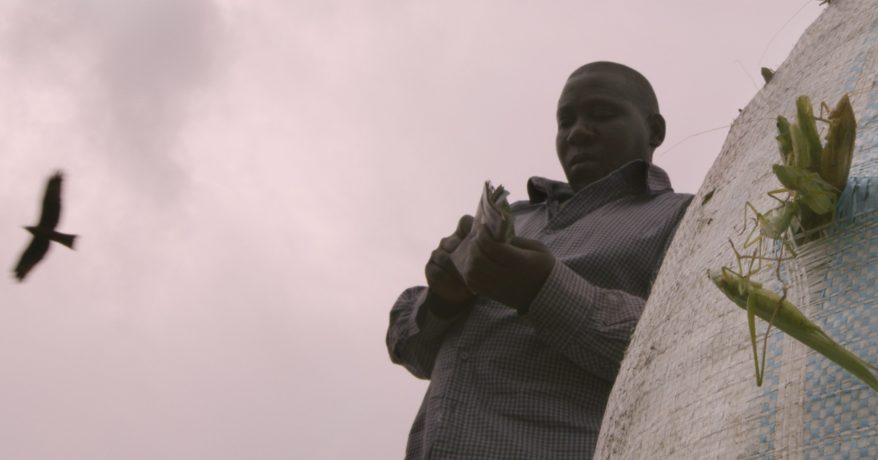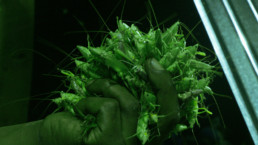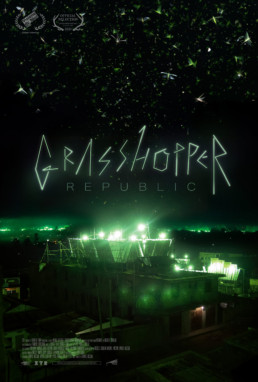‘Grasshopper Republic’: Discover the Magic of These Delicate-Winged Insects
Grasshopper Republic immerses audiences into the harvest season of a Ugandan grasshopper trapping team in this reverential documentary.
Shot in cinema verité style with special attention paid to spatial structure, director Daniel McCabe immerses audiences into the harvest season of a Ugandan grasshopper trapping team in the reverential documentary, Grasshopper Republic. Mesmerizing close-ups of these intricate and delicate winged insects with vibrant coloring and distinct chirping sounds, display a quality of beauty that is so often overlooked. As magical as they appear, the grasshoppers are more often regarded as a life source for a section of the Ugandan community, both as a bartering tool and in their food supply. Over the course of three seasons, McCabe highlights the tireless efforts of the trapping team and the lengths they go to secure this elusive prey by the barrel load.
Grasshopper Republic opens with the trance-like birth of a grasshopper, which looks more like an alien species than an earthly animal. Pale green transparent bodies with long extended antennas and black beady eyes fill the screen, all captured with special macro cameras akin to BBC’s Planet Earth. This birth sequence foreshadows the pacing of the remainder of the film, which is to say it is slow and methodical. There is an intentional lack of dialogue and no talking head interviews are given. Rather, Daniel McCabe relies on field recordings and natural audio from the remote forests and villages to help build out the film’s natural aesthetic.

With no acknowledgment of a camera presence, the documentary’s biggest strength is its commitment to being immersive and observational. We quietly watch as the trapping team builds makeshift traps to catch grasshoppers and the ecological fallout that comes along with it, including the potential havoc wreaked on the village crops. Bringing this intensity to life is the wonderfully rich score from composer Robert Aiki Aubrey Lowe (Candyman, Master, Telemarketers). His use of synths and reverb sounds like the buzzing of a swarm of insects, which really hits a crescendo near the end of the film when millions of grasshoppers appear in the sky like shooting stars.
Director Daniel McCabe found inspiration for Grasshopper Republic in the photobook “Nsenene” by Michele Sibiloni. This influence translates into a gorgeous documentary that plays more like an art piece than a traditional film. Commentary on living in symbiosis with nature is prevalent throughout the 94-minute runtime and serves as a beautiful reminder of gratitude for nature and its abundance.
Morgan Rojas
Certified fresh. For disclosure purposes, Morgan currently runs PR at PRETTYBIRD and Ventureland.


